
Saulė: After high school, I got into Kaunas Stepas Žukas Technical School of Applied Arts.
*Saulė: *After high school, I got into Kaunas Stepas Žukas Technical School of Applied Arts. It was still called like this in 1996. We, students, would simply call it Stepžukė. My years of studies were probably the happiest of my youth. In high school, I felt different and I couldn't wait until I graduate, and in Stepžukė I felt like myself. This place on a hill with a fenced territory was like a protected area where I felt very well. A group of us working with glass was a small one, so this communication was very warm, we would usually spend our time together and go to concerts.
Read more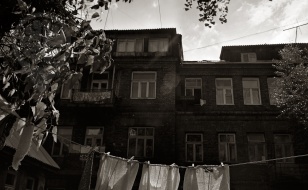
Eglė: Hens running across the yard, pigs being farmed behind the house and the old horse of Kaunas silently sitting in the garage...
*Eglė:* Hens running across the yard, pigs being farmed behind the house and the old horse of Kaunas silently sitting in the garage... It is a description of a casual rural household after World War II, of one of the buildings located in Nemunas Street. Described as the Red-light district during the interwar period, the street was many times called the Venice of Kaunas as well, as the overflowing river used to flood the street. Despite the street being unknown to many tourists, and a few of who live in Kaunas since birth having been there, locals are full of memories. It is known that since the 1870’s, the property of land belonged to the town dweller Chaim Gidoni and after his death in 1876; to his family’s generations. In 1900, two-storey buildings (now Nemunas St. 14 and 14B) of red brick masonry were built. Later, in 1927 the property was sold to Benjamin Gruzdas, who was the owner of a jewellery store in Laisvės Avenue and the official provider of Omega watches. The oldest residents remember themselves being children, sitting in the house and watching playfully the overflowing river. Together with floating giant floes (heet of floating ice) the river used to flood almost up to the windows of the ground floor of the Nemunas St. 14B building. Ms. Elena was one of these children, who grew up listening to the clamour of children’s voices and saw adults organising birthday celebrations with food, music and dances until sunrise. However, not all of the memories cause nostalgia. According to Mr. Levas, several tragic accidents have happened: during one of the floods, a woman drowned when she accidentally fell into the basement, a German military officer jumping out from the balcony of building 14B, and one woman burned alive in the fire of a storehouse where she lived. Another local resident, Romas, remembers the times when several families had to live in one small apartment. Once, his mother hosted two students, who protested against the Soviet Union government by sewing so called “granny” pants out of the union’s flag and hanging it on the fence next to the parterre. These past stories allow people to feel the spirit of the street and re-live every moment experienced by former residents of Nemunas street.
Read more
Arkadijus Vinokuras (member of the "Company"): We were proud of Kaunas, and the situation of Lithuania hurt us, so a lot of us would carry a litas coin featuring Duke Vytautas from the Smetona times.
*Arkadijus Vinokuras (member of the "Company"**):* We were proud of Kaunas, and the situation of Lithuania hurt us, so a lot of us would carry a litas coin featuring Duke Vytautas from the Smetona times. Miesto Sodas has become the symbol of wanting freedom, a little island of anti-conformism and the hippie movement itself was an important phenomenon as an explosion of freedom in the Soviet Kaunas and Lithuania.
Read more
Jonas: “At the beginning of July 1962 and after graduating the 1st High School of Ukmergė (now the High School of Jonas Basanavičius), My classmate Vytautas Juknys and I, Jonas Navikas, arrived at Kaunas for the first time (!).
*Jonas*: “At the beginning of July 1962 and after graduating the 1st High School of Ukmergė (now the High School of Jonas Basanavičius), My classmate Vytautas Juknys and I, Jonas Navikas, arrived at Kaunas for the first time (!). After submitting our documents to the graduate admissions committee at the Central Office of Kaunas Polytechnic Institute (KPI) to enroll in the programme of radio engineering at the Faculty of Electrical Engineering, we reached a beautifully-shaped building on the other side of K. Donelaičio Street, which was then the History Museum. After looking around for some time, we noticed that individuals or groups usually take photos next to the lions. Having a photo camera at our disposal, we took photos of one another unaware of the fact that this place symbolizes the city of Kaunas. After coming back from Kaunas, you could show it with pride as a proof that you have visited Kaunas... These were the hot topics back then, when television was only making its first steps in Lithuania, and sightseeing tours were popular among both adults and school students. It is difficult to compare with contemporary technologies that have entered our daily lives...
Read more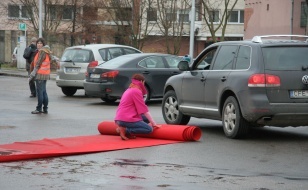

Asija: “When the family got too big, we received a room in Laisvės Ave.
*Asija*: “When the family got too big, we received a room in Laisvės Ave. 1A (currently Laisvės Ave. 3). The apartment had 5 rooms, each housing a different family. The rooms were separated by glass doors. Each side followed their own way of living. This “transparent’’ life continued for a long time, as covering the doors or building a wall were not affordable. Those doors made the apartment authentic and beautiful.”
Read more
Lolita: "Gimiau ir augau Kauko alėjoje (kai gimiau, ji tuo metu dar vadinosi S.
*Lolita:* "Gimiau ir augau Kauko alėjoje (kai gimiau, ji tuo metu dar vadinosi S. Šimkaus alėja). Ąžuolynas yra vienas miesto miškas, o šalia gyvenantiems buvo aktualu jį konkretinti. Taigi, tarp K. Petrausko, Parodos ir Radastų gatvių esančią dalį, kur XX a. 9 dešimtmetyje dar buvo atrakcionai, vadinome Mažuoju Ąžuolynu, arba Ąžuolynėliu, o dalį nuo K. Petrausko g. Zoologijos sodo link - Didžiuoju Ąžuolynu. Į Zoologijos sodą eidavome pėsčiomis. Ąžuolyne - įspūdingiausia, be abejo, buvo stumbro skulptūra, bet būdama maža labai mėgau ir L. Striogos "Poilsį", kurį vadinau "hipopo" - matyt, vaikui kažkuo priminė begemotą." (2019 m.)
Read more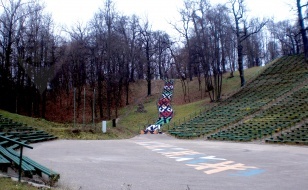
K.
*K. Laurinaitytė: *I remember Dainų Slėnis since I was six, because this was when I started singing in the choir and participating in the Song Festivals. I have been spending time here since childhood, so this place seems so natural and maybe even commonplace, yet pleasant.
Read more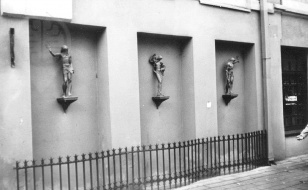
Gintaras: In Vilniaus Street, next to the underground passage, there is a building with niches, in which three little sculptures were placed.
*Gintaras: *In Vilniaus Street, next to the underground passage, there is a building with niches, in which three little sculptures were placed. Unfortunately, they did not stand and entertain the passers-by for a long time. They were vandalized one night. It was around 1988, I don't remember for sure. But a place is never empty, and these three beauties occupy this place right now :) (2014)
Read more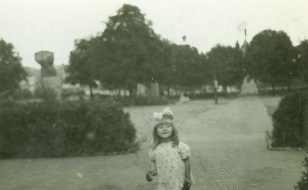
Lili Kristina Vaičekauskaitė-Čepauskienė: If someone is collecting historical material, there is an interesting episode.
*Lili Kristina Vaičekauskaitė-Čepauskienė:* If someone is collecting historical material, there is an interesting episode. Photo (see photo No. 2) pictures mother of the Lithuanian partisan Kazys Veverskis (pseudonym Senis). Our family became acquainted with her under very interesting circumstances. This one time, my mommy went to the post office to run some errand and found a crying woman there. She came to send a parcel to her relatives imprisoned in Siberia, but she could not write their address. Then my mother brought her home to Vasario 16-osios Street, and my father packed everything nicely, wrote down the address and posted it for her. And this acquaintance was the one that lasted. I remember this woman visiting us for many years in relation to this matter. I called this woman my granny Veverskienė. (2014)
Read more
Asija: “The most important place for me was the Sobor.
*Asija:* “The most important place for me was the Sobor. Pretty much all of the most significant memories were associated with this building. I remember when a whole bunch of children ran to the Sobor, as a neighbour from a nearby house was getting married there. It was my first encounter with Lithuanian traditions and with the God in the church. I remember when we ran up the stairs and saw the bride with a veil, long white bridal gown and a church decorated with flowers.
Read more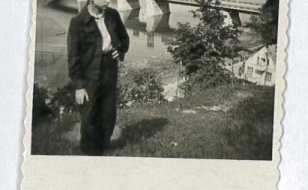
Kęstutis: „Augau Aleksote, S.
*Kęstutis*: „Augau Aleksote, S. Dariaus ir S. Girėno gatvėje. Gyvenome kieme, kuriame stovėjo du namai ir vienuolika lietuvių šeimų. Tad vaikų buvo daug, kokie septyni panašaus amžiaus berniukai. Po pamokų kieme daugiausia žaisdavome futbolą. Vakare kieme vyresni žmonės susėsdavo grupelėmis ir lošdavo kortomis. Todėl mes turėdavome ieškoti kitos vietos. Netoli buvo aerodromas, didelės pievos, eidavome tenai. Žaisdavome visokiausius judrius žaidimus: tinklinį, krepšinį, futbolą... Aerodrome prie mūsų prisijungdavo ir kiti vaikai. Visi ėjome į 17-tą vidurinę mokyklą, vieni kitus pažinojome, ne taip, kaip dabar... Buvo laikas, kai S. Dariaus ir S. Girėno gatve nevažiuodavo autobusai. Naudodavomės funikulieriumi, nusileidę pėstute per tiltą eidavome į miestą. Kai buvau paauglys, jau eidavome į šokius Pergalės gamykloje, J. Gruodžio muzikos ir Medicinos seserų mokykloje prie Gertrūdos bažnyčios, Klamkėje – net nežinau, kodėl taip vadinome – prie Muzikinio teatro... 17-toje mokykloje taip pat būdavo šokiai, bet ne tokie įdomūs, nes ten įleisdavo tik mokinius. J. Gruodžio mokykloje visuomet grodavo gyvą muziką, kitur – įvairiai. Žiemą ateidavome su paltais. Turėdavome atsisegti ir parodyti, ar dėvime švarką ir ryšime kaklaraištį. Tuomet įleisdavo. Jeigu būdavai su megztiniu – ne. Eidavau į kino teatrą „Pašvaistė“, kuris stovėjo šalia bažnyčios. Ypač gražūs buvo spalvoti filmai „Vargdieniai“, „Paryžiaus katedra“, „Trys muškietininkai“. Į kiną eidavo labai daug žmonių. Į kavinę užsukdavau retai. Jų nebuvo tiek daug: „Metropolis“, „Tulpė“, „Orbita“. Tai suaugusių žmonių vietos. Nors atsimenu, kad kavinėje „Vakaras“ sukdavosi grindys. Studijų laikais eidavome į Spurginę šalia Senamiesčio, ten būdavo ir skanu, ir nebrangu. Vis dėlto, reikia įvertinti, kad lankymasis kavinėse labai priklausė nuo finansinės padėties. Pokario metais pinigų nebuvo. Būdami vaikai stovėdavome per naktį prie parduotuvės laukdami miltų, cukraus, duonos... Ryte ateidavo tėvai ir mus pakeisdavo. Žaisdavome futbolą prie aerodromo ir matydavome, kaip atvažiuoja duonos mašina. Mesdavome viską ir lėkdavome jos pirkti.“ (2019 m.)
Read moreSITES OF MEMORY
1 Projects 114 12 Routes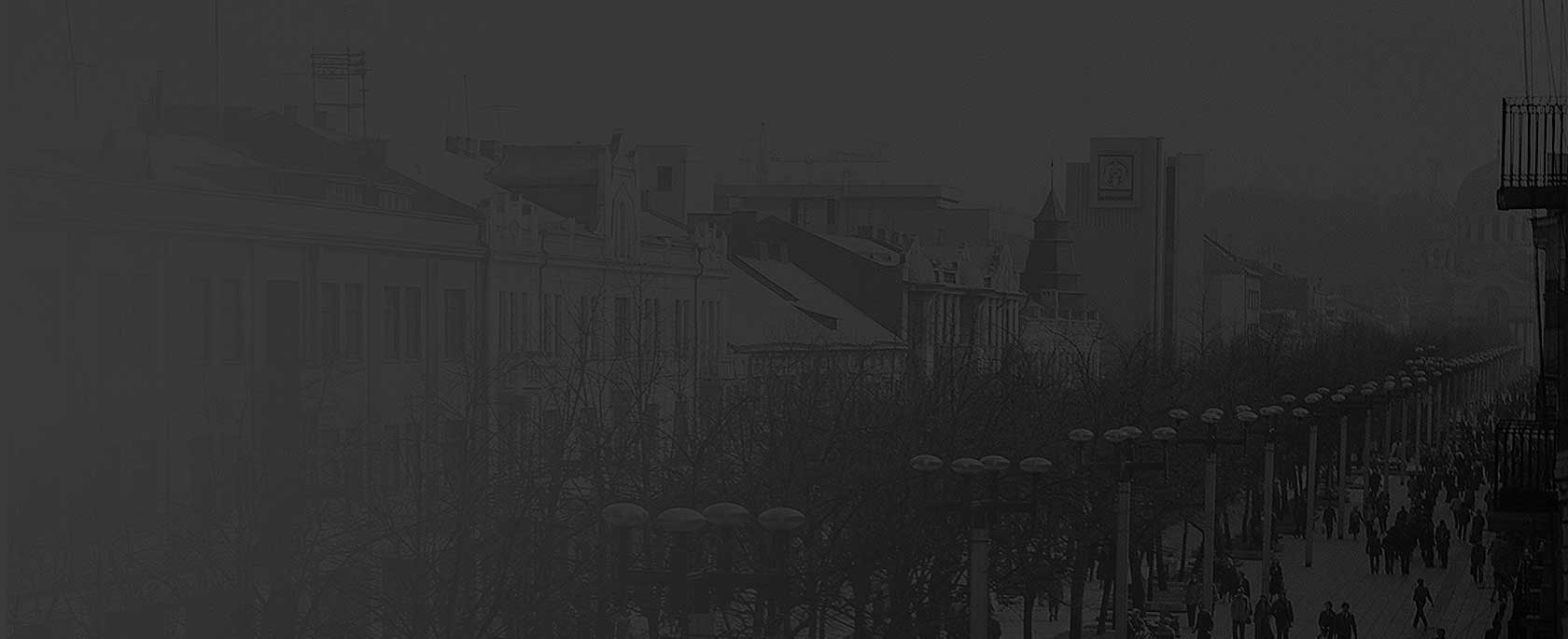
Our memory is framed by spatial reference points: places, sites, buildings, and streets give us our bearings and enable us to anchor and order our memories. So, the material alteration of these places can lead to the substantial modification of our memories, and even their disappearance.Post your memory here